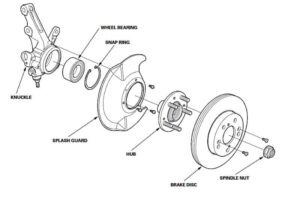Ceramic coating has seen a rise in popularity over recent years with car enthusiasts, promising to enhance the appearance and durability of a vehicle’s paint job. But is it as effective as it claims to be? Are there any downsides to using ceramic coating on your car?
The ceramic coating industry has grown exponentially, with many companies and car shops offering this service. However, before deciding to invest in ceramic coating, it is crucial to weigh the pros and cons of this product to make an informed decision.
While ceramic coating can protect your car’s paint from scratches, UV damage, and other environmental factors, there are some cons to consider. This article will discuss the potential disadvantages of ceramic coating and what you should be aware of before deciding.
Introduction to Ceramic Coating
A transparent, thin ceramic coating film is put on your car’s surface. It is applied similarly to paint protection film and is often created from a silica-based material.
The main goal of ceramic coating is to shield the paint on your car from environmental dangers, including dirt, particles, UV rays, and other elements. Additionally, it may offer some resistance to scratches and simplify cleaning your car.
Cons of Ceramic Coating
Ceramic coating has become a popular choice for car owners seeking to protect their car’s paint. While there are many advantages to ceramic coating, there are also disadvantages that car owners should know before deciding to invest in it.
1. Cost
One major disadvantage of ceramic coating is its cost. Getting a professional to apply it to your car can be expensive, and even DIY kits can be pricey. This cost can deter car owners from purchasing a more affordable paint protection option.
2. Prep Work
Getting your car ready for a ceramic coating can be time-consuming and labour-intensive. The entire surface must be cleaned thoroughly, polished, and stripped of any wax or previous coatings. This can increase the cost of the ceramic coating and can be an inconvenience for some car owners.
3. Application Difficulties
Applying the ceramic coating requires skill and knowledge. While some car owners opt to apply it themselves, getting a smooth and even coat can be challenging. This can result in an uneven or patchy appearance.
4. Time-Consuming
Applying ceramic coating can take several hours to days, depending on the size of the car. This can significantly inconvenience people who rely on their cars daily.
5. Chips and Scratches
It may offer some protection against minor scratches and chips, but it is not indestructible. If your car suffers from a significant impact, the coating can still be damaged, requiring costly repairs.
6. Not Permanent
This car coating is not a permanent solution. It will eventually wear off and require reapplication. This can be costly and time-consuming for car owners who want to maintain the coating’s benefits.
7. No Stain or Spot Resistance
While ceramic coating offers some protection against water, it does not make your car stain or spot-proof. If your car is exposed to hard water or chemicals, it can still suffer from water spots and stains.
8. Limited DIY Repair Options
If your ceramic coating becomes damaged or worn, it may not be possible to repair it yourself. In most cases, you must have a professional remove the coating and then reapply it. This can be expensive and inconvenient for car owners looking for DIY solutions.
9. High-Maintenance Work
Once your car has a ceramic coating, you must take extra care of it. Avoid circumstances where your automobile can get scratched or scraped and car washes that employ harsh chemicals.
10. It Is Not Appropriate for Everyone
It might not be ideal for you if you reside in a region with extreme weather or have no access to an enclosed space to store your automobile in. It is preferable in these circumstances to stay with a conventional wax or sealant.
It may be an excellent method of guarding the paint on your car. But before you buy one, it’s crucial to consider the advantages and disadvantages.
11. Need to Correct Paint Issues Before Coating
Prior to applying a ceramic coating, you must correct any flaws in your paint if it isn’t in perfect condition. This includes blemishes like chips, dents, and scratches. If you don’t correct these flaws, the coating will make them appear even worse.
12. Not an Everlasting Fix
Ceramic coatings are a temporary fix. They must be administered again after they inevitably wear off. This implies that at regular intervals, you’ll need to set aside money for the expense of reapplication.
Does it Make Sense to Invest in Ceramic Coating?
Ceramic coating is an investment that can help in protecting your car’s paintwork against environmental factors, scratches, and other hazards. It also makes cleaning easier and maintains the car’s shine.
But, this investment comes with a higher cost and additional maintenance requirements. Ultimately, deciding to invest in ceramic coating depends on personal preference, the need for added protection, and willingness to upkeep it.
The Final Verdict
Ceramic coating can be an excellent investment for car owners looking to protect their paint, but weighing the benefits and disadvantages before deciding is essential. Understanding the downsides of ceramic coating can help you make an informed choice that’s right for you and your car.



